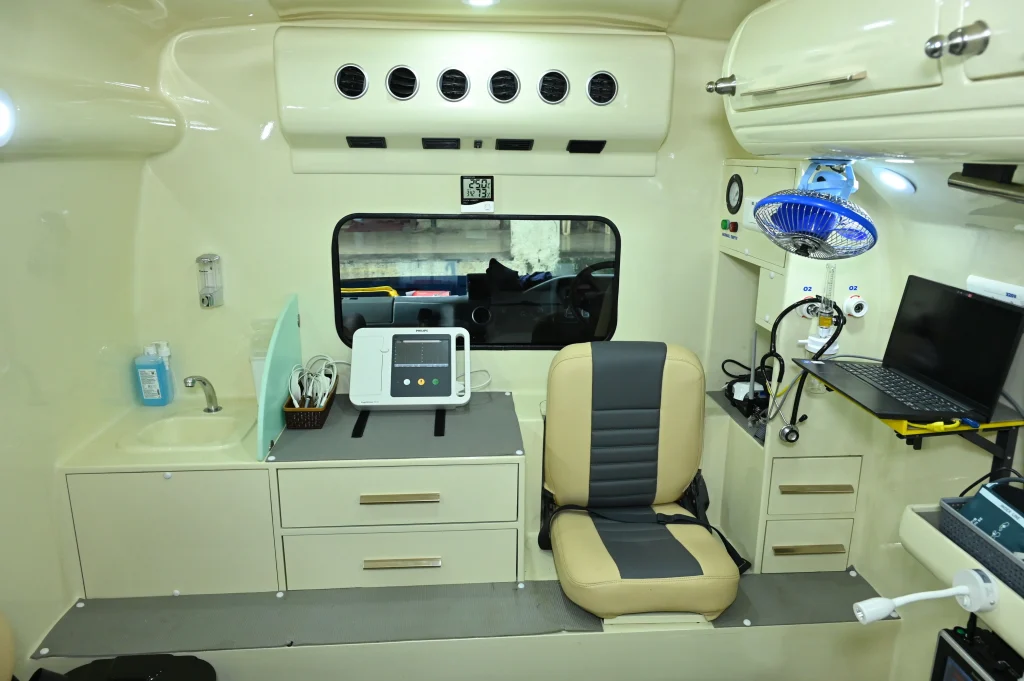How Telemedicine in 5G Ambulance Can Improve Prehospital Care
Integration of health and technology, an idea known to all, popularized in the modern world, has grown to give birth to a number of advancements that has not only brought about innovation in health and medicine but improved the lives of people and day after day continues with the promise of a healthier future. The practice of telemedicine in a 5G ambulance is one such innovation in healthcare. The idea of prehospital emergency care has changed over the years, and improved in terms of quality. But in a developing country like India, the requirement for a new revolution in technology for healthcare remains an absolute need.
In this blog, we will look into how the combination of a 5G ambulance and telemedicine in ambulances and the use of 5G healthcare applications can help advance the future of quality healthcare.
What is Telemedicine?
Telemedicine is all about making healthcare accessible to all regardless of where they are located. For doing so, telemedicine utilizes advanced telecommunications systems to provide healthcare services to people remotely. Medical information is critical in emergencies, the right data provided at the right time can help save precious lives and prevent any future damage and avoid complications. Telemedicine in ambulances can help for the same reasons. Medical data provided can help the doctors diagnose and treat patients faster and avoid complications before even the patient arrives at the hospital. Telemedicine in ambulances can happen through video conferencing, remote monitoring devices, and transmission of data.
Telemedicine is of three types;
- Teleconsultation: Teleconsultation is a type of telemedicine that refers to the use of telecommunications systems to provide remote medical consultations and expert guidance. In-person visits can be avoided, costs can be reduced and time can be saved. Telepharmacy and teletherapy 5G healthcare applications have also gained popularity since the pandemic.
- Telemonitoring: In telemedicine, telemonitoring can be used to monitor the patient’s condition, check on their vital signs from time to time and provide the necessary care, all remotely. These 5G healthcare applications can help in better patient care.
- Tele-education: This can be helpful in emergency training, teaching and refinement of existing trauma care skills. Tele-education can help in improving the quality of healthcare provided, by improving the skills of existing emergency technicians and raising new technicians by training them up in the necessary skills.
Advantages of Telemedicine in a 5G Ambulance
- Fast Real Time Communication: A 5G Ambulance helps in transmitting medical data and other information at a faster speed. This makes communication more reliable among the healthcare professionals at hospitals and the paramedics or emergency medical technicians in the 5G ambulance. During emergencies, time is of course crucial, but at the same time, this telemedicine in ambulances and the provision of right information can help save the critical patient’s life.
- Accurate Diagnosis and Treatment: High speed data transfer and video conferencing in a 5G ambulance, allows proper and faster diagnosis and enables the doctors in the hospitals to get a clear idea of the patient’s condition, this ensures effective treatment. In many cases, a misjudgement in the patient’s condition and a wrong diagnosis can lead to the patient’s death and complications also.
- High Definition Data Transmission: In a 5G ambulance, the images transferred like CT scans, X rays etc, have greater quality, this telemedicine in ambulances can help the professionals in the healthcare facility to prepare better for the patient’s arrival.
- Better Management of Resources: 5G healthcare applications and telemedicine in ambulances can help manage resources better. In emergency services, there are problems like staff shortages, increasing calls and transport delays. Using a 5G ambulance this can be reduced significantly. Patients can be treated in the ambulances itself, allowing better use of resources in the hospitals too.
- Greater Accessibility: Use of 5G telemedicine in ambulances, allows better reach, in the sense that emergency healthcare can be provided even in the rural areas without any delays. A 5G ambulance has advanced GPS and navigation systems, and this provides greater accessibility.
With the 5G ambulance gaining popularity in recent times, the new revolution of telemedicine happens to have emerged slowly, but surely. India is a busy country with a teeming population, and these factors, during emergencies can pose a threat. Enhancing the efficiency of emergency systems using telemedicine can take these challenges, help deal with trauma and improve patient care during emergencies. Telemedicine is the future of quality healthcare and is indeed a huge step towards improving prehospital patient care.
